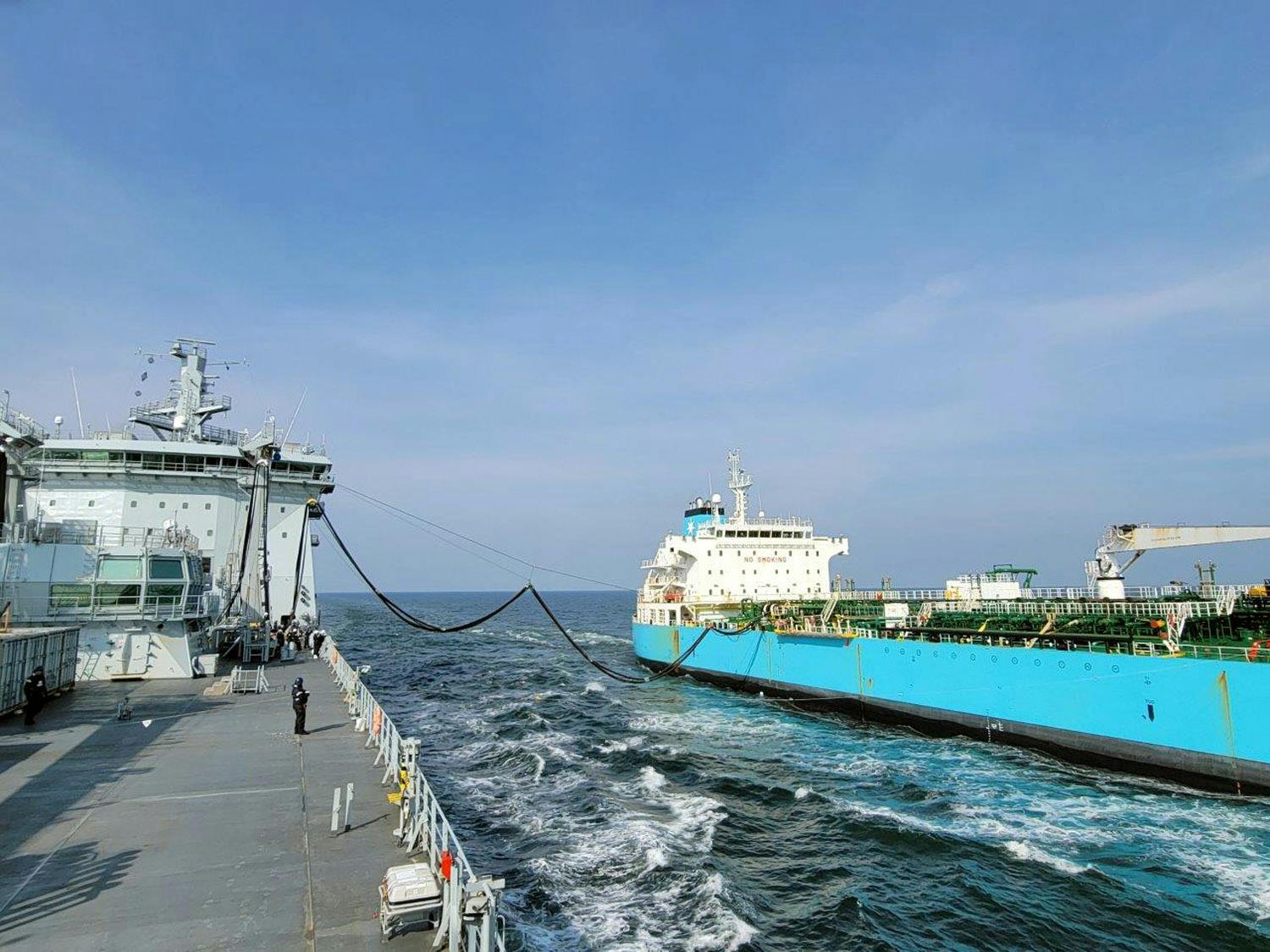daftandbarmy
Army.ca Dinosaur
- Reaction score
- 32,322
- Points
- 1,160
Can we do this?
Royal Fleet Auxiliary ship Tidesurge linked up with the civilian MT Maersk Peary in Lyme Bay to see whether oil could be practically transferred between the two vessels.
“Calling upon civilian oilers to sustain the fleet could prove crucial if the military tankers are unable to stock up on supplies by putting into port. The Royal Navy relied on extensive support from civilian tankers during the Falklands conflict 40 years ago – sustaining a task group 9,000 miles from the UK. But in more recent years, that support has not been needed, nor training practised.
The Royal Fleet Auxiliary – whose ships support and supply Royal Navy warships on operations around the globe – joined forces with its American counterpart, US Military Sealift Command, who chartered the Peary for the trials. The resulting link-up in the Channel – known as a Replenishment at Sea or RAS in naval parlance – saw the refuelling rig from Tidesurge successfully sent across to the Peary where it hooked-up with its replenishment station.”

 ukdefencejournal.org.uk
ukdefencejournal.org.uk
The Royal Navy has announced that they have been exploring the idea of NATO naval vessels using commercial tankers to supply fuel to warships “in times of crisis”.
Royal Fleet Auxiliary ship Tidesurge linked up with the civilian MT Maersk Peary in Lyme Bay to see whether oil could be practically transferred between the two vessels.
“Calling upon civilian oilers to sustain the fleet could prove crucial if the military tankers are unable to stock up on supplies by putting into port. The Royal Navy relied on extensive support from civilian tankers during the Falklands conflict 40 years ago – sustaining a task group 9,000 miles from the UK. But in more recent years, that support has not been needed, nor training practised.
The Royal Fleet Auxiliary – whose ships support and supply Royal Navy warships on operations around the globe – joined forces with its American counterpart, US Military Sealift Command, who chartered the Peary for the trials. The resulting link-up in the Channel – known as a Replenishment at Sea or RAS in naval parlance – saw the refuelling rig from Tidesurge successfully sent across to the Peary where it hooked-up with its replenishment station.”

Royal Navy trials using commercial tankers to sustain fleet
The Royal Navy has announced that they have been exploring the idea of NATO naval vessels using commercial tankers to supply fuel to warships "in times of crisis".
 ukdefencejournal.org.uk
ukdefencejournal.org.uk


